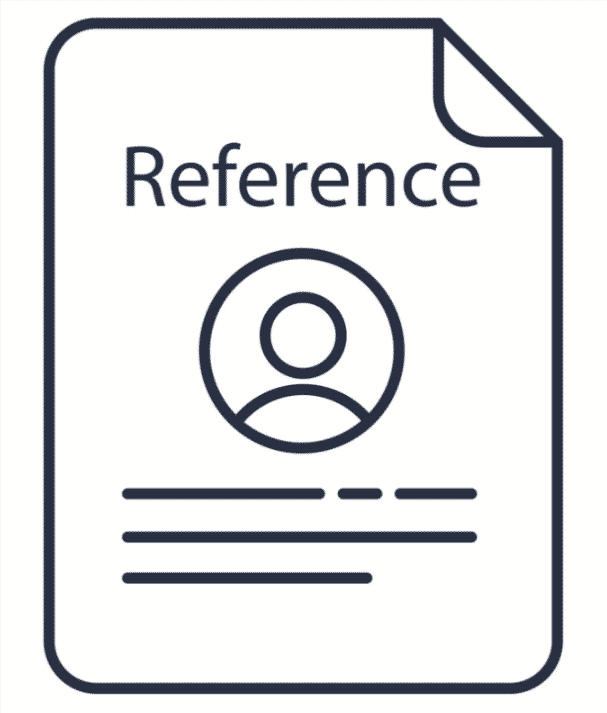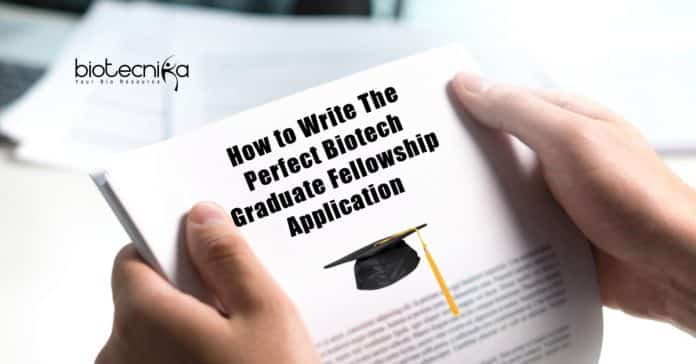Biotech Graduate Fellowship Application – How to Write The Perfect Biotech / Life Science Graduate Fellowship Application
What is a Fellowship Application?
A fellowship application is a proposal for a coveted fellowship or scholarship conferred by an organization or the government that will give a chosen meritorious student the finances to carry out their studies or research. Selection is based on experience and achievements, educational qualifications, the purpose of study, and plans. The selected individual is expected to live up to their displayed potential. The fellowship committee could periodically review their performance to deem them worthy of the continued patronage.
Therefore, a biotech graduate fellowship application is of utmost importance as it serves to show the individual’s caliber in bagging the fellowship.
The purpose of a fellowship proposal are as follows:
- To expound on your suggested project and describe what motivates you to work on it.
- To introduce yourself to the board/committee and make them familiar with you and your work.
- To give the committee reassurance of your investment and dedication to the project and convince them that you are the right person for it.
- To exemplify how you’ve prepared for it.
What comprises a good Biotech / Life science Graduate Fellowship Application?
- Curriculum Vitae
The CV or resume aims to give the reviewer a brief overview of your basic qualifications and achievements. Keep it precise, and avoid frivolity or elaboration. Avoid mentioning irrelevant details or fundamental skills such as proficiency in MS Word, Excel, etc., or even plainly stating your hobbies. Let your skills speak for themselves as achievements. For example, if you are skilled in the CRISPR Technique, mention it and related projects you have done. Mentioning Certifications also adds a lot of weightage to your CV. Your CV should be a mirror of you, it should reflect who you are and what changes your skill can bring in to the scientific community.
- Statement of Purpose
The statement of purpose in a graduate fellowship application should show who you are as a person. It may show how you’ve changed and evolved over the years, developing a passion and goal in your chosen field. It also displays your integrity and dedication as a mature individual who will not mess up the opportunity if obtained. Take the reader through the story of your life, but don’t make it a novel. Let it be relevant and not bore the reader with irrelevant details or poor language. You may have seen essays that start with an epiphany. If you decide to go with it, avoid making it too flowery or poetic.
- Research Statement
A research statement is basically an essay that emphasizes your scientific skills and talks about your research goals. As it is a technical form of writing, be precise. Explain the problem, be specific, and give adequate, relevant examples.
- Recommendation letters
These are deemed the most important documents by many reviewers as recommendation letters from people you have worked with or under usually give a clear and unabated 
Steps to writing a great Graduate Fellowship Application
- Start early
This point cannot be stressed enough. Start everything- from finding a suitable fellowship to making a final draft of your proposal- early. A lot of times, due to delay, there is a drop in the quality of work. Do not compromise on quality because of time shortage. If you’re a procrastinator, here’s where you should draw the line. Understand the importance of this goal that will help you reach your ultimate one. Writing a grant or fellowship proposal could take months right from conceiving the initial idea, developing it into a goal, and putting it into coherent words for yourself, to researching on it, communicating with peers, professor, and guides, arranging necessary documents, making several drafts, getting feedback, and making a final draft. Therefore, give yourself more than enough time to complete all the actions.
- Research the fellowship and the process to obtain it thoroughly
Before writing the biotech graduate fellowship application, learn everything there is to know about the fellowship and the process you have to go through for it. Check out the website and familiarise yourself with it. Keep in mind the criteria for evaluation. Every fellowship has guidelines of its own. Learn about the required documents and materials, guidelines, and restrictions in the process. If you’re applying for more than one fellowship, understand the different guidelines for each process and tweak your application accordingly to align your interests and aims to theirs.
- Understand your audience and purpose
The proposal needs to be written or modified according to the needs of the committee or the organization. Align your vision with theirs and prove that you will not stray from your purpose. The purpose is different from the subject prompt. Your skills will help you fulfill your purpose and explain your subject and summarize it in the form of direct points. However, since the purpose has a deeper meaning, elaborate appropriately on it to draw in the reader and give them a sense of the greater purpose behind your goal. Be a Roman in Rome. For example, a National Science Foundation fellowship has a committee of seasoned scientists who care more about your scientific knowledge and goals. A rotary club fellowship committee would like to focus on your research’s societal and interpersonal implications, where you need to give a more charitable perspective and benefit society.
- Look for guidance and samples of fellowship applications externally
Organizations and universities hold many workshops and lectures for writing a fellowship proposal. Be aware of their schedule and attend to them to gain better knowledge from individuals of experience. Also, go through graduate fellowship application samples written by successful candidates (who have succeeded in obtaining the fellowship). Take relevant points from their applications without aping them. Work on assimilating the concept without imitating it. Various blogs and websites help you formulate an effective proposal. Test out different things and pick what resonates with you and your purpose. Before carrying out this step, it is always better to write the very first draft on your own. There will be no external influence initially, and you can let your creativity flow before you have to stick to protocol. The best applications are usually the most original ones.
- Work on an application outline based on structure and logic
Organize your application with an outline. Make sure that your thought process is easy to follow. This outline need not be formal or be for anyone else’s eyes but yours. Make a list of your primary ideas, goals, paragraph order, and your thought process of the whole thing. List key ideas to be highlighted in each paragraph and focus your writing on it. An outline helps you avoid repetition and straying away from the logic.
- Divide the application into suitable sections
Using the outline, break the writing into sections, and approach your work stage by stage. 
- Focus on clarity and precision
Reviewers for fellowship applications have thousands of applications coming in. They don’t want to read a story that beats around the bush. Be clear and concise in your application. If you go for a story or anecdote, make it relevant to your purpose. Let your message have an impact that comes from the clarity and crispness of prose. But don’t make it a document of bullet points. Present your ideas tastefully with the literary elegance of a scientific piece.
Focus on the following points when writing the proposal:
- The writing should be in the active voice.
- Use language that is firm and not vague.
- Avoid redundancy.
- Decrease wordiness.
- Eliminate excess jargon
Let the application appeal visually
Visual accessories in the application make it easier to digest. Visual representations of your application may be in the form of figures, diagrams, schemes, pictures, etc. Your application’s visually appealing organization can be done by breaking it into short paragraphs, informative heading, and using bold print. Let these visual aspects complement the contents of the graduate fellowship application and not clutter it. The presentation must be neat and pleasing to look at, encouraging the reader to move forward with a clear mind.
- Let the materials of your proposal work in unison
Your proposal’s different contents, that is, the SoP, research statement, LoRs, etc., need to be aligned with you and your purpose. The documents work together to expound on your achien]vements and potential to the committee. Using all the information you provide, the probability of your success will be calculated. Do not re-narrate your content and lead the reviewer to the relevant document wherever necessary.
- Make multiple drafts of your application by editing and rewriting
The first draft of the graduate fellowship application that you come up with will never be the final one. Go through the application process again, edit, refer, rewrite, and analyze again and again for a perfect proposal. If frustration takes over, let your mind declutter by putting the draft away for a day before working on it again. Often, 4-5 drafts make a well-polished application.
- Ask a wide range of people for feedback
You might have worked on your application for months on end, familiarising yourself with your work and goals. But, the committee will see you as one among hundreds or thousands
There isn’t one single formula for everyone in writing a graduate fellowship application. So make it your own. Make it as original as possible. A fellowship may propel you to heights unknown- career-wise and as an individual. It is, however, the first step towards funding your research. We hope that these tips help you write a smashing proposal that gets you to your goal.
Author : Deepthi Prakash






































